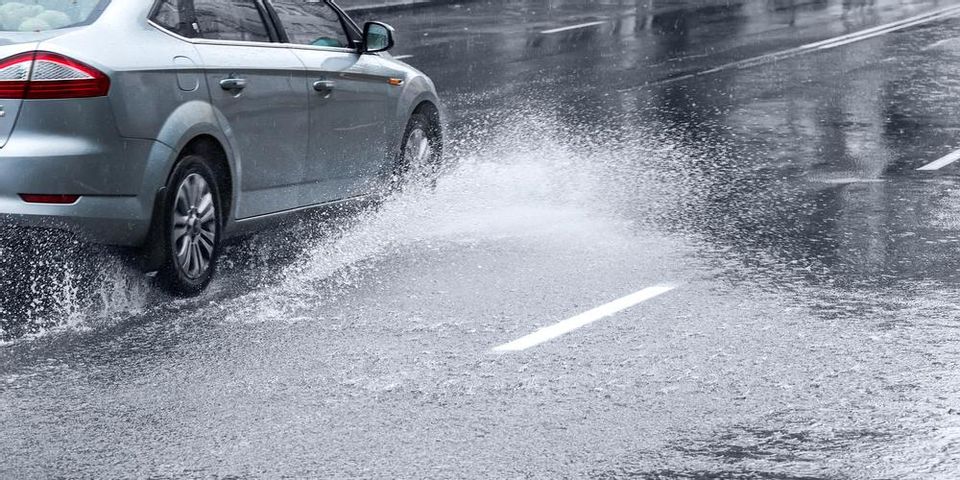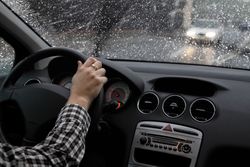5 Defensive Driving Tips for Heavy Wind & Rain

Adverse weather conditions can strike without warning and make driving stressful for even the most experienced motorist. While you can’t predict the weather, knowing how to be strategic on the road and when to call roadside assistance will get you out of a tough situation. Below are a few basic steps you can take to keep yourself safe when the forecast looks grim.
5 Tips for Safe Driving in Bad Weather
1. Slow Down
Rain leaves moisture on the pavement, which creates less traction for your tires. The precipitation also makes it harder to see potential obstacles in front of you. These two issues combine, making it harder to change lanes and turn safely. Slowing down increases your ability to maintain control of your vehicle.
2. Increase Following Distance
Even if you need to be somewhere at a particular time, you should drive slower than usual on a rainy day. Slick roads, poor visibility, and wet brakes can all make driving more hazardous, and it’s more difficult to respond to changing conditions. Make sure you leave an extra one or two seconds of following speed between your car and the one in front of you to avoid accidentally rear-ending them.
3. Avoid Standing Water
 Driving through water can cause your vehicle to hydroplane, making you lose control. Puddles can also obscure a pothole or other hazard that can damage your car. Deep water puts your wheels and undercarriage at risk of needing roadside assistance.
Driving through water can cause your vehicle to hydroplane, making you lose control. Puddles can also obscure a pothole or other hazard that can damage your car. Deep water puts your wheels and undercarriage at risk of needing roadside assistance.
4. Recognize Wind Storm Threats
Storms often bring heavy wind gusts that can push your vehicle out of your lane or off the road. Drive below the posted speed limit and hold firmly to the steering wheel so you are prepared to maintain control. Avoid roads without guardrails if it’s possible to do so, and don’t drive if the weather makes you feel unsafe.
5. Avoid Larger Vehicles
Larger vehicles have blind spots on clear days, and heavy rain makes the situation worse. They also have less control in poor weather conditions. Semi-trucks need ample stopping distance on wet roads, making it even more important to increase your following distance. Additionally, using your headlights instead of the daytime running lights will make you more visible to truck drivers.
If you’re caught in a storm and need roadside assistance, contact Goldbeck Towing Service. They serve customers throughout La Crosse County, WI, and offer transportation to both local and long-distance locations. Their fleet is equipped to tow vehicles of all sizes. Call (608) 781-4869 for 24-hour assistance and visit them online to learn more about their towing services and vehicles.
About the Business
Have a question? Ask the experts!
Send your question

